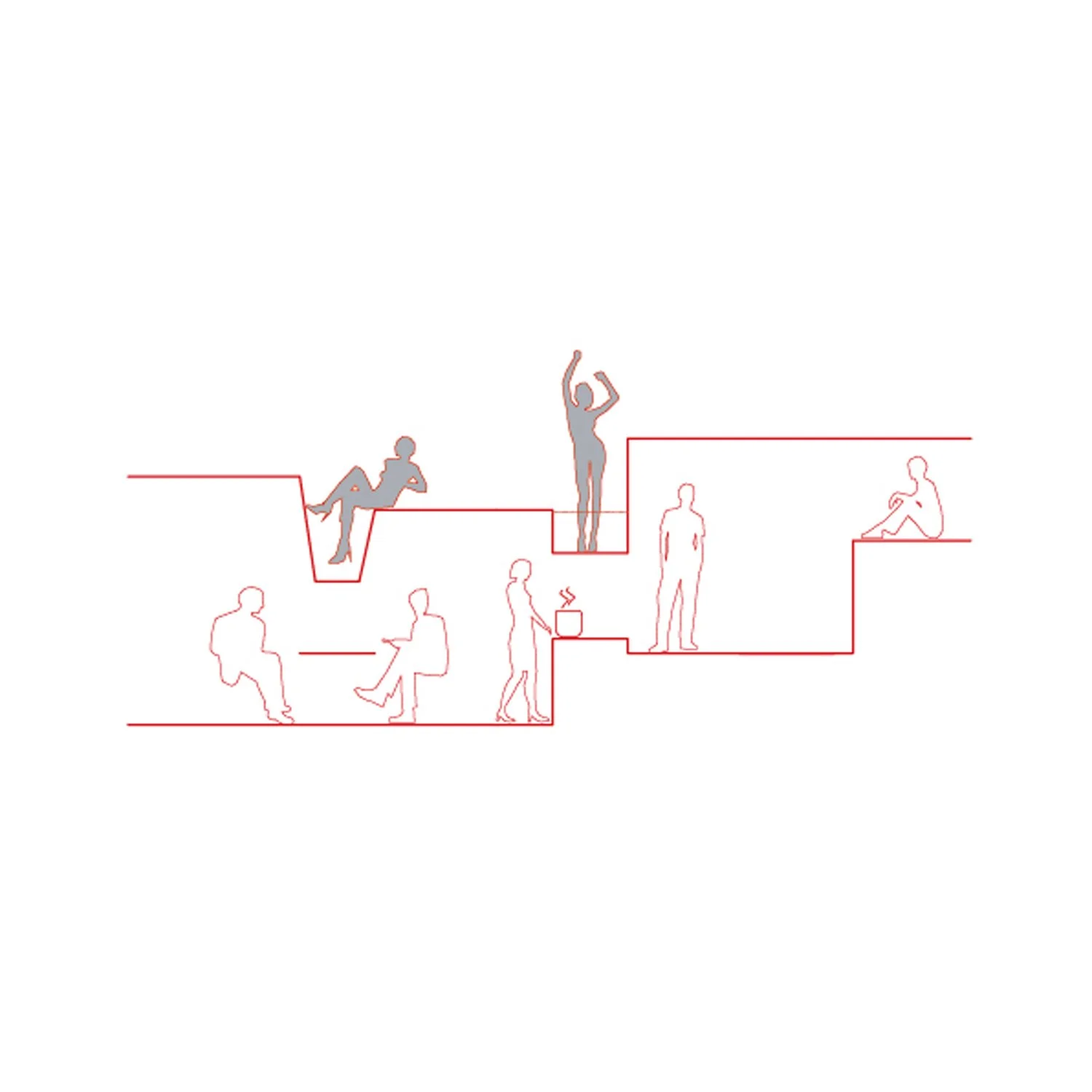The main focus of the thesis is the negotiation of boundaries along multiple modes, spatial and social, and at many scales, from micro size to extra-large. This negotiation becomes a generative parameter for an architectural proposal. The boundaries created within the project do not determine public-private dichotomies, but rather gradients of social exchange. This emphasis yields results that not only define qualities of separation, but just as importantly establish a field of potential performative effects. A genotype system and an activity-tile system interact and inform each other within a larger project field, allowing the emergence of a spatial organisation we call a hyper attached system.
This is produced at several different levels as a form of mass-customisation that allows clients to shape their immediate environment strategically, spatially and socially. A complex scenario of interaction between future neighbours generates the parameters guiding the subsequent development of the individual residential units and their arrangement. The fact that the proposed housing units are not suburban villas (e.g., freestanding objects like Villa Savoye), without physical proximity to their neighbours, determines the necessity of mutual effects, where customisation of one unit affects the other. This system is not a 'plug-in' type of unit arrangement. The resultant highly complex combinatory system of this approach to design and planning exceeds modern principles based upon assembling discrete, basic elements (like Le Corbusier's Unité d'Habitation) through a principle of penetration and an interlocking of neighbouring dwellings that suppresses the storey (and homogenous floor level) as a guiding form of organisation – it triggers a game of interactions amongst inhabitants that in turn generates the ultimate project neighbourhood.
Specific lifestyles demand unique spaces: tailored dwelling units. Mass-customisation requires a mass-production process, initiated by an 'early entry' of client preferences. negotiate my boundary! presents a model for customising and purchasing a dwelling via the internet; one that integrates the principles of simultaneous reaction and responsiveness, that installs an intensive interaction and negotiation among future clients in a real-time process with incorporated speculative market-strategies ('stock-exchange' model).

